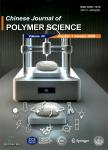Surface Treatment and Biomimetic Mineralization of Porous Microspheres Fabricated by Calcium Gluconate-g-Poly(D,L-lactide)
Surface Treatment and Biomimetic Mineralization of Porous Microspheres Fabricated by Calcium Gluconate-g-Poly(D,L-lactide)作者机构:State Key Laboratory of Organic-Inorganic Composites Beijing Laboratory of Biomedical Materials College of Life Science and Technology Beijing University of Chemical Technology Beijing 100029 China
出 版 物:《Chinese Journal of Polymer Science》 (高分子科学(英文版))
年 卷 期:2017年第35卷第7期
页 面:837-845页
核心收录:
学科分类:07[理学] 070205[理学-凝聚态物理] 08[工学] 080501[工学-材料物理与化学] 0805[工学-材料科学与工程(可授工学、理学学位)] 080502[工学-材料学] 0702[理学-物理学]
基 金:supported by the National Natural Science Foundation of China(Nos.51025314 and 21104089) the Fundamental Research Funds for the Central Universities(No.ZY1632)
主 题:Calcium gluconate Poly(D,L-lactide) Mineralization Hydroxyapatite Porous microspheres
摘 要:Porous hybrid microspheres were fabricated by the synthesized calcium gluconate-g-poly(D,L-lactide) (CG-g- PDLLA) composites. These hybrid microspheres were treated with an alkaline solution for different period of time to control the amount of generated carboxylate groups and remained CG on the surface. The microspheres were then incubated in a supersaturated simulated body fluid (1.5 SBF) solution for different time to investigate their biomimetic mineralization behavior. The depositions were found to have a fine cluster morphology, a similar crystal structure and chemical structure to natural hydroxyapatite, and a medium Ca/P of approximately 1.30. The effect of surface treating time on the structure and mineralization behavior of these microspheres has been discussed in detail. The results indicate that the nucleation and growth of apatite on the surface are influenced by the induced carboxylate groups and the remained CG. The hybrid CG-g- PDLLA microspheres have the potential as a novel alternative in bone tissue engineering.




